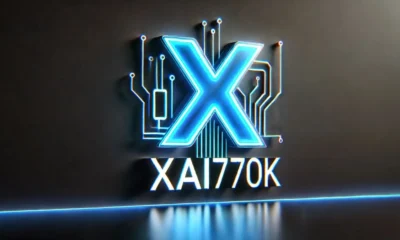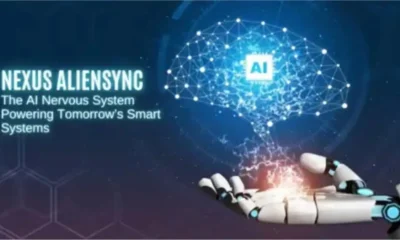GENERAL
Everything You’ve Ever Wanted to Ask About Signs (But Didn’t Know Who to Ask)

Q: Why do businesses even need professional signs anymore? Isn’t everything digital now?
A: While digital presence is vital, your physical signage still does the heavy lifting when it comes to location-based branding. A well-designed sign is the first thing a person sees—it establishes trust, communicates professionalism, and draws attention. Whether it’s an ADA sign inside a building or a large exterior monument sign, these visual cues work around the clock to promote your identity.
Think of it this way: your website might explain who you are, but your sign shows it—visually, instantly, and without needing Wi-Fi.
Q: But what makes a good sign “good”? Isn’t it just about slapping a logo on a board?
A: If only it were that simple! Effective signs are the result of thoughtful design and strategic intent. Color choices, typography, scale, visibility, and placement all play a role. For instance, a quality sign company understands how to create visibility from a distance and how to ensure the messaging is clear when someone is walking right by.
It’s about balancing creativity and compliance. A sign should grab attention, guide movement, and align with the personality of your space.
Q: What’s the difference between a sign company and a print shop?
A: Great question—and one that often causes confusion. A print shop might provide banners or basic promotional materials, but a full-service sign company handles the design, engineering, fabrication, and sign install process from start to finish.
They’ll assess your building, consider foot traffic and ADA requirements, and even help you navigate permits if necessary. This level of expertise ensures your sign does more than decorate—it communicates.
Q: What’s the deal with ADA signs? Are they optional?
A: Not at all. ADA signs—those that comply with the Americans with Disabilities Act—are mandatory for most public buildings in the U.S. These signs include braille, tactile lettering, and specific contrast ratios to assist people with visual or cognitive impairments.
But beyond compliance, ADA signage sends a message of inclusion. It shows that a business cares about accessibility and user experience. When ADA signs are well-designed, they integrate seamlessly into the environment without sacrificing function or style.
Q: Is it possible to have a sign that looks good and meets legal codes?
A: Absolutely. The myth that ADA or regulatory signs have to be bland is outdated. Today, innovative designers are blending aesthetics with compliance. There’s room for color palettes, custom materials, and architectural detailing—even on functional signs.
It’s all about working with the right design and fabrication team. That’s where companies like DesignElement Raleigh shine. They specialize in creating signs that are not only functional and compliant but also on-brand and visually compelling.
Q: What’s the most overlooked part of the signage process?
A: Installation. People often underestimate how important sign install is. The wrong height, angle, or placement can reduce visibility or even create hazards. Expert installation ensures the sign is secure, legible, and correctly aligned with foot traffic and building features.
The process also involves checking mounting surfaces, understanding lighting, and integrating with existing design elements. It’s far more than hanging something on a wall—it’s an engineered solution.
Q: Does signage impact branding that much?
A: In a word: yes. Think about iconic brands—most of them can be recognized by signage alone. A carefully designed and placed sign reinforces your visual identity, from logo to tone of voice. It builds consistency between your website, business cards, storefront, and interior environment.
Consistency builds trust. And trust builds long-term customer relationships.
Q: I’ve seen all sorts of materials—wood, metal, acrylic—what’s best?
A: The right material depends on several factors: location (indoor vs. outdoor), style, durability, and budget. A metal sign might offer a sleek, modern feel for an office lobby. Acrylic is great for backlit letters or dimensional graphics. ADA signs often use tactile plastics with braille embossing.
Then there’s the ever-popular aluminum and composite materials for long-term exterior durability. The best sign company will walk you through these options and suggest what aligns with your branding, traffic, and environment.
Q: I run a commercial building. How do I coordinate multiple signs across the property?
A: That’s where comprehensive signage programs come in. Instead of designing one-off signs, a full signage strategy can cover everything from ADA-compliant room labels to directional signage, monument signs, and even emergency exit placards.
This strategy keeps your space cohesive, navigable, and visually aligned. When you partner with a company like DesignElement Raleigh, you’re getting guidance that ensures every sign complements the space and enhances the user experience.
Q: Do signs need maintenance? Or are they install-and-forget?
A: Like any physical structure, signs benefit from occasional maintenance. Outdoor signage may need cleaning or weatherproofing. Illuminated signs can develop issues with backlighting or power supply. Even indoor signs can fade, chip, or become outdated if your branding evolves.
Proactive maintenance ensures longevity and appearance—and helps you avoid costly replacements down the line.
Final Thoughts
You see hundreds of signs every day, yet rarely stop to think about how they shape your experience. From wayfinding to branding to compliance, signage quietly but effectively tells a story. A story of place, identity, accessibility, and function.
In Raleigh and beyond, businesses are recognizing that signage isn’t just a finishing touch—it’s an integral part of user experience and brand communication. With thoughtful planning and professional execution, your signage becomes more than a label. It becomes a language.
And if you’re navigating that journey, having the guidance of a trusted team like DesignElement Raleigh can make all the difference—quietly, clearly, and with undeniable impact.
-

 BIOGRAPHY7 months ago
BIOGRAPHY7 months agoBehind the Scenes with Sandra Orlow: An Exclusive Interview
-

 HOME1 year ago
HOME1 year agoDiscovering Insights: A Deep Dive into the //vital-mag.net blog
-

 HOME1 year ago
HOME1 year agoSifangds in Action: Real-Life Applications and Success Stories
-

 BIOGRAPHY1 year ago
BIOGRAPHY1 year agoThe Woman Behind the Comedian: Meet Andrew Santino Wife




























